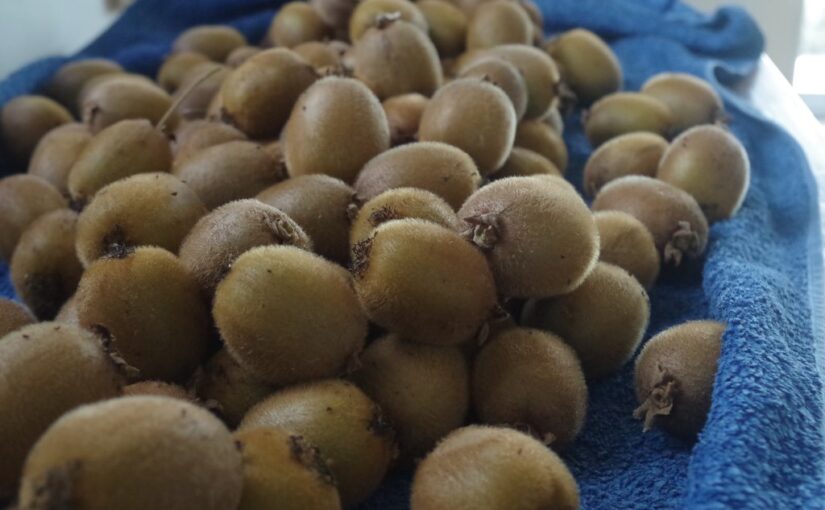Long term readers will recall that the farm here is connected to, err, nothing. We do have dirt roads, so that is something, but sometimes even those are not good. For Sandra and I, that was part of the appeal of the area. There’s something quite energising for the soul to pit your wits and resources against the ultimate test: trying to thrive with no connected services. That’s the theory anyway.
In order to thrive in such an environment, it’s not a bad idea to first reduce one’s expectations as to what is considered a necessity. Years ago, a garbage pick up service was introduced to the area. Every Tuesday morning, the garbage trucks navigate the dirt roads collecting household refuse and recycled materials from around the area. The service is not free, and by the time it was finally offered, we’d long since adapted to not having the service. It’s not hard, but you do have to have systems to collect and process the various waste streams. And remember not to produce much waste in the first place.
There’s no mains sewerage connected to the area. All the waste here enters the toilet and drains, and flows using gravity into the worm farm. The worms are always hungry for more organic matter. Dead chickens, in you go mate! And from the worm farm, the minerals end up in the soil. During the summer months, the wallabies, wombats and kangaroos graze the rich fresh grass which grows there. Then those critters do their business elsewhere, thus spreading around the fertility.
If we run out water, it’s nobodies problem but ours. All of the houses around here collect and store rainwater for later use. The past couple of years have been very wet, but earlier years have had prolonged dry spells, and at those times the storages can get low. Trucking in water is an expensive option, and at such times the queue for service is long indeed. The trucked in water is probably too expensive for use on vegetables. Economics always plays a part in these options.
Gas (LPG) does get used here, but mostly as a backup energy source for heating water and cooking. The 45kg / 99 pound bottles that get delivered aren’t cheap, and the price is only ever heading in one direction – up. Plus there is the quarterly rental fee for the two bottles. The fuel is way too expensive to use as a heat source. For heating we use firewood, and if you’ve ever had to purchase a wood heater, you’ll known that isn’t cheap either. But at least the fuel can be locally sourced. The century of logging activities has left us with decades of firewood (at our usage rates). We just have to process the stuff and then haul it back up the hill. Not as easy to do as you’d imagine, probably why the felled timber was left there.
As to electricity, well, supplying your own service using solar power makes little economic sense. Over winter, for three weeks either side of the winter solstice, the sun is physically low in the sky. The mountain ridge to the north combined with the tall trees makes harvesting sunlight difficult at this time of year. But really, that’s not the problem. The hardest days for winter solar power are when thick low clouds obscure the sunlight. On such days, it doesn’t matter how many solar panels you have, it’ll never be enough. This technology is good, after all it converts sunlight into electricity, but it certainly isn’t good enough to run an industrial civilisation. That green story makes no sense.
Here’s the statistics for the solar power system for the past six weeks:
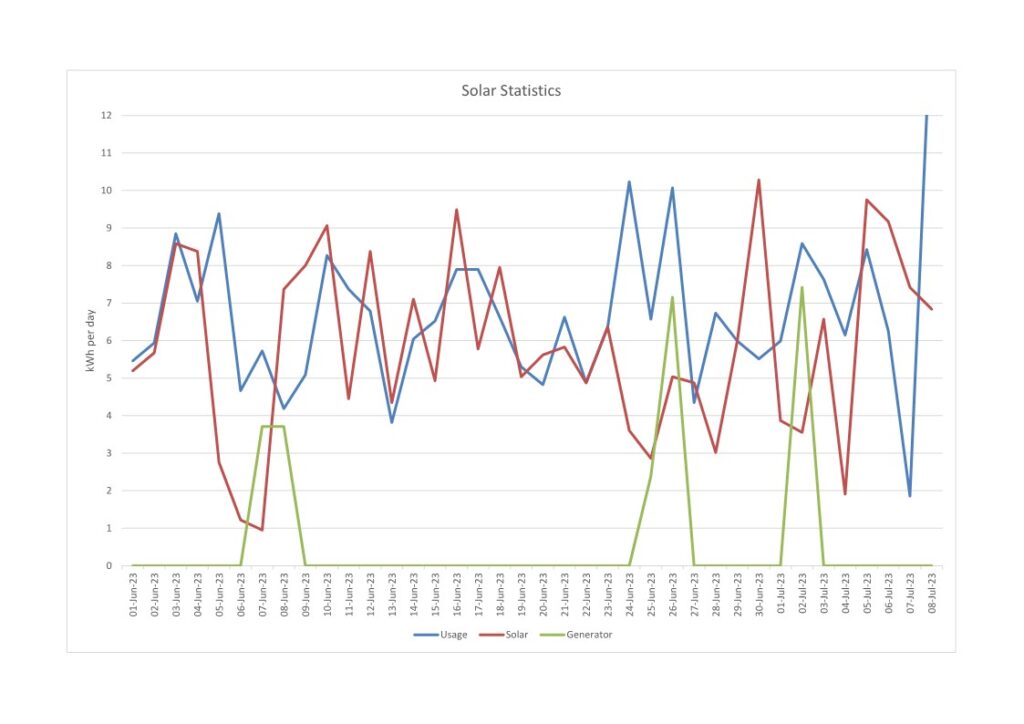
Looks like a lot of squiggly lines doesn’t it? But some meaning can be derived from those lines. Ordinarily, the blue line (usage in kWh) and the red line (solar generation in kWh) should hover around each other. That’s an ideal situation because it means we are matching our usage to what the solar panels are generating. And for most of the year we achieve that.
Winter however presents some difficulties with this technology. Observant readers may note that on more than a few occasions, the red line (solar generation in kWh) dropped quite low in the graph, and sometimes for a continuous number of days. The 7th of June was the second worst day of solar power generation that I have ever recorded. The installed 8kW of solar panels produced 1 kWh of electricity for an entire day. To add insult to injury most of the electricity that day was consumed by the system itself. If extrapolated to a national level, there would be extraordinary blackouts.
Fortunately, to avoid extraordinary blackouts here during this period of time, we have a small generator which we pressed into service for four days during the above period. That’s the green line (petrol generator battery charging in kWh). It’s not free to keep a generator and battery charger, plus a spare, on hand doing nothing for most of the year. There’s a cost to that which we bear. Not being connected to services, that’s our risk, and we accept that.
However, as far as I understand things with the far bigger, national mains electricity system, there is no spare capacity hanging around to kick in and provide a couple of days of backup power supply. It’s just not there, although there are a few sources which can do that trick for a couple of hours. But for days, I don’t think so. And that’s an economic decision.
So I’ve been pondering the interactions of economics and electricity lately, because earlier this month retail prices for electricity have increased by something crazy like 30%. That’s going to hit every person and every business hard across the country. It’s hardly surprising that official interest rates weren’t lifted earlier this month, they didn’t need to be – at least not this month. Households and businesses will now have less mad cash, because more of it will be required to pay for electricity. And unlike interest rate hikes, everyone will pay.
You’d have to be particularly dense to not realise that the electricity price hike will increase inflation. After all, if the same stuff suddenly costs more than previously, then that’s the very definition of inflation. In response, businesses will put their prices for stuff up, and workers will ask for more pay to cope with the increased prices. This story could get ugly, if it’s not already ugly enough.
But what’s really weird about the story, is that the extra 30% cost may not be ploughed into urgently constructing extra electricity generators. I certainly can’t recall hearing of any new proposed large coal fired power plants – and those things provide most of the electricity that people and businesses use on daily basis. In fact, one of the largest coal fired power stations of all on the continent, Eraring, is set to close in two years time. The thing is a monster, and produces 2.88GWh, 24 hours a day. I do love the wild talk in the media about replacing the generator with batteries, as if somehow a 1.4GWh battery will make up the shortfall. The thing sounds good, like super-impressive until you comprehend it is the equivalent of half an hour of the Eraring generators supply, and yet still needs to be filled somehow. Talk about bonkers.
As if that weren’t strange enough, the Australian government plans to increase the population by 400,000 people this year alone. I have a suspicion that the core of that policy is to maintain upwards pressure on house prices, thus further fuelling inflation. How could it not? Most certainly there will be winners and losers in that story. But I do also wonder how the electricity system will cope with the additional demand from all those new people, both now and into the future. It’s utterly bonkers. And there are so many different policies being pursued at the moment, many of which have contradictory outcomes. Kinda makes you wonder seriously about the numpties in charge! As someone who has to provide their own electricity supply, I can’t muck around with fairy tales like: “They’ll think of something” or “Theoretically it should work”.
It’s been a fairly mild winter so far. Some days have produced sunshine:

And there have been plenty of rainy days.
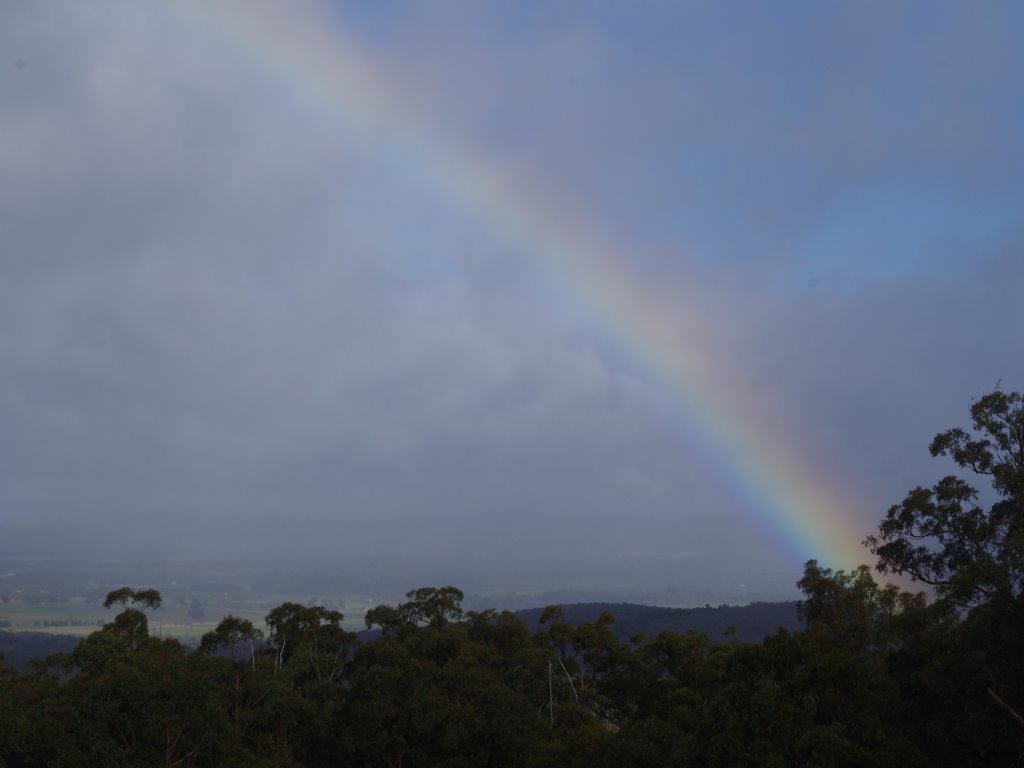
We’ve long since reached the dreaded Peak Rocks. That’s where all of the easy to nab rocks have been nabbed. That doesn’t mean we’ve run out of rocks, far from it. We simply have to go further afield and put more energy into nabbing rocks. It’s a bit of a shame because rocks are very useful with many of the projects here, such as the new low gradient path project.
This week we cracked apart a rather large boulder. It provided eight smaller yet still large rocks (plus lots of small gabion filler rocks). Those will be used on the new low gradient ramp project. The first step in the process is to select a large rock and begin drilling a line of 250mm deep 18mm diameter holes. An electric jackhammer is then used to force the holes open, thus splitting the rock. The Romans did much the same, several millennia ago, but without electricity.
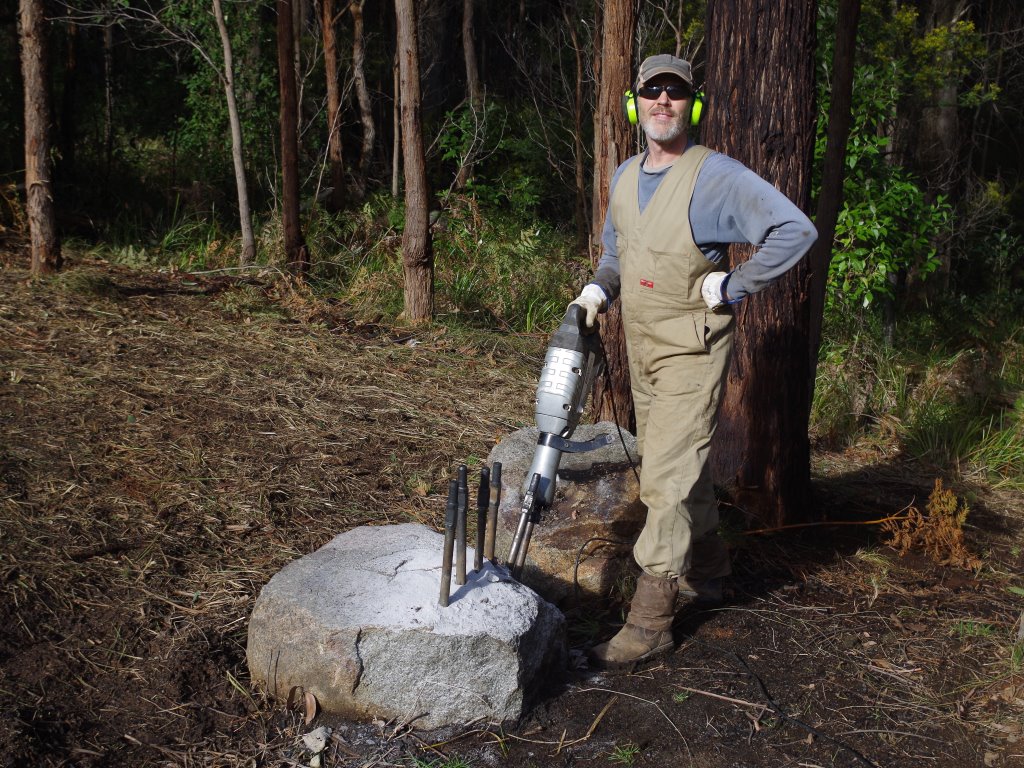
We generally look for fissures and cracks in a rock, but more often than not, there are none. The overall size of the split rock can be decided up front. The first split we made this week produced a thinner rock which has a specific purpose in the project.
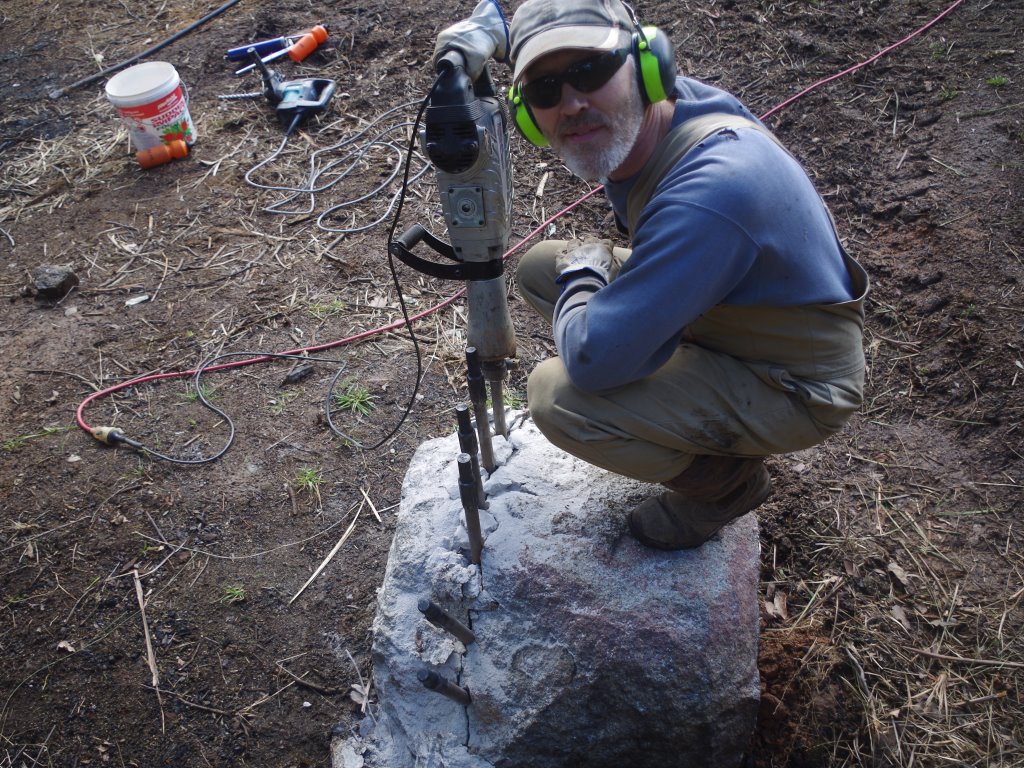
Observant readers will note in the above image that a line has appeared along the drill holes. That’s where the rock cracks and splits. It gives quite neat breaks in the granite.
It takes a few hours of work, but eventually we broke the rock into several still large sections.

Then those large sections get broken into smaller (yet still large) but more easily moved rocks.

Eventually, the entire rock gets split into more useful sizes. In the next week, we’ll move all of these rocks back up hill where they’ll be used on the new low gradient path project. It was a good haul, but Peak Rocks and stuff, sure takes a lot of work.

So yeah, not everyone is up for splitting rocks. And plenty of people live in apartments, where the neighbours would get upset if a jackhammer were used. I’ve heard city folk timorously say: ‘What can I do?’ Make soap, that’s what! We make an olive oil soap, which is so much better than any soap you’ll buy at the supermarket. It’s just not a task for the careless. But if they could do that task in Fight Club…
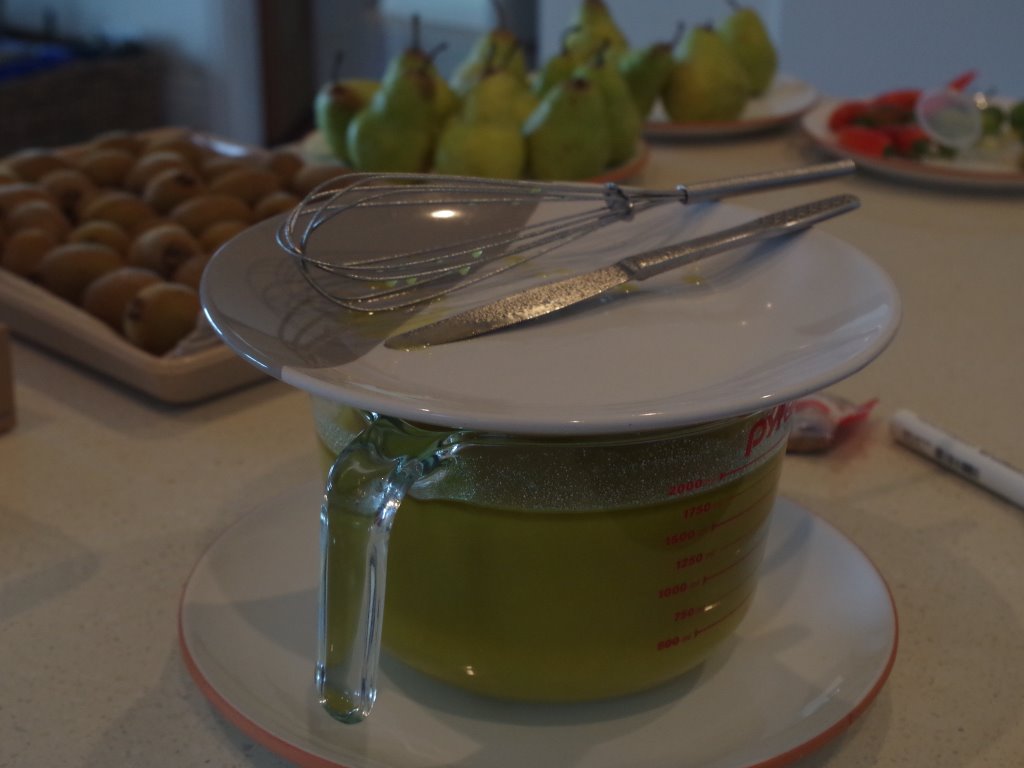
We harvested about two thirds of the kiwi fruit crop. The parrots let us know when the crop is slightly less than ripe – they begin eating it. The birds can have the remaining fruit. We harvested a lot.
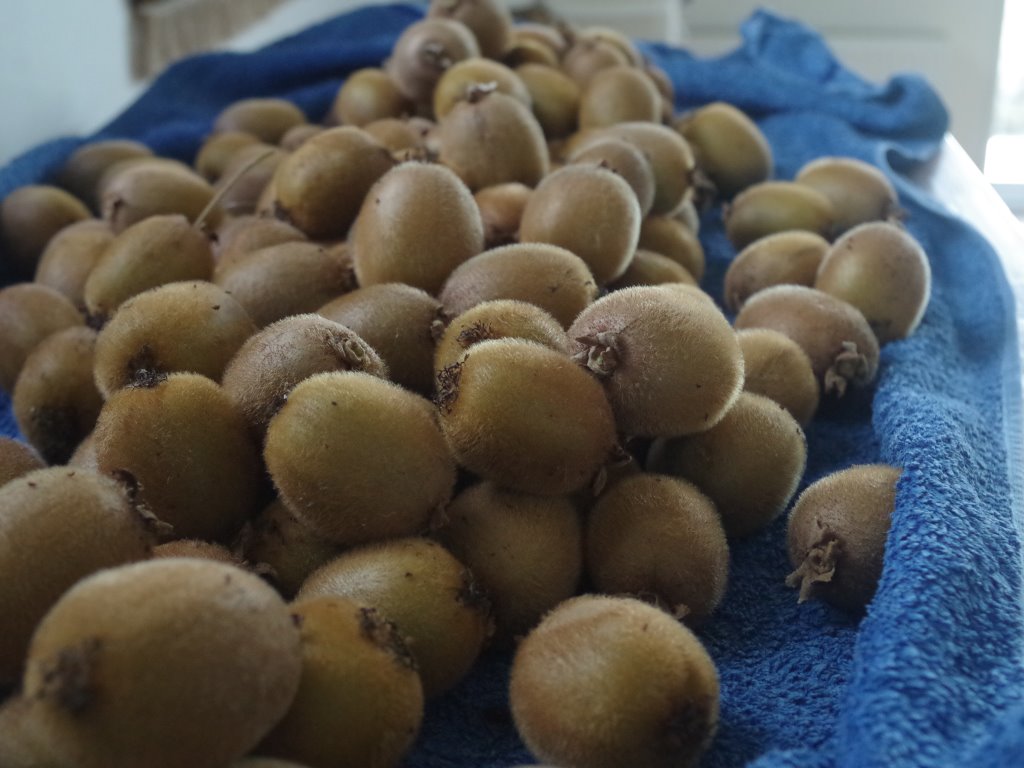
A carboy of kiwi fruit wine has been begun. And you can make wine in apartments too. No excuses.
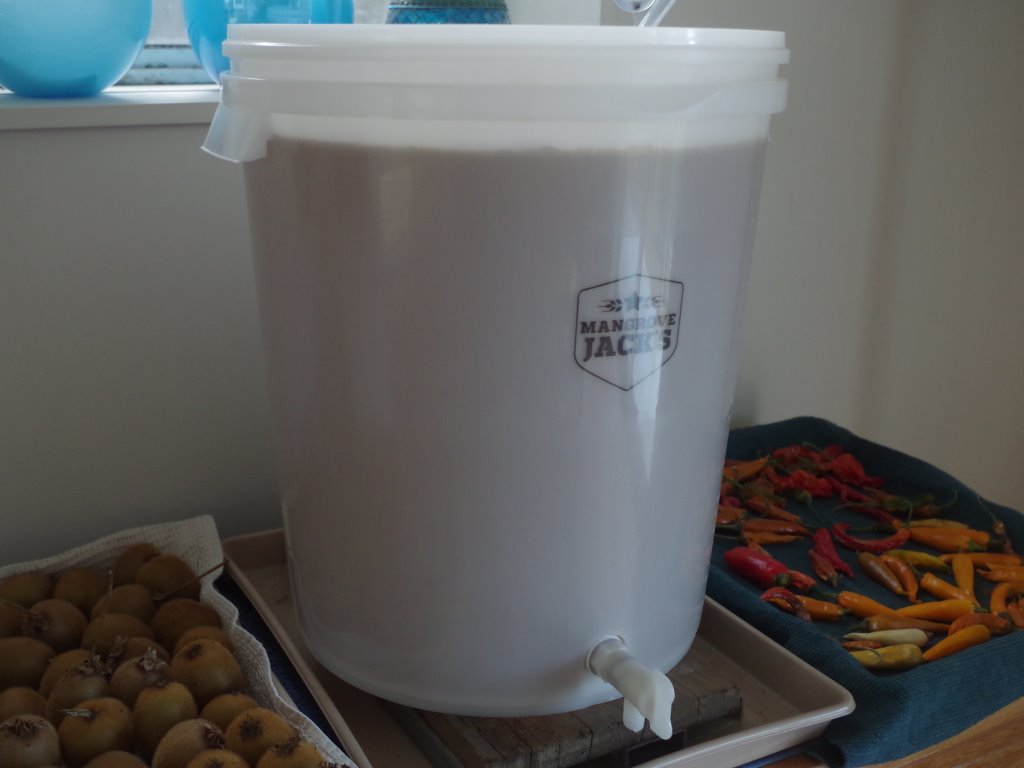
I spent about a day – on the coldest and rainiest day of the week, in the shed doing repairs and performing maintenance on the many machines which we use. One machine had a flat tyre, and the remaining tyre looked as if it had cracks in the rubber. I’m experimenting by replacing the inflatable tyre with solid rubber tyres, and I’ll be interested to see how long they last. Another machine needed a large cutting blade replaced. That’s when I discovered the spindle bolt was stuck and had a left hand thread. The bolt took a fair bit of effort to remove. Another machine had a faulty starter capacitor. Ripped that component out.

I brought the faulty components back inside the house and tracked down replacement parts. It’s funny that with this stuff, a single faulty component can be a show stopper. Best to keep up with maintenance.
The greenhouse, which long term readers will realise celebrates its first birthday, continues to amaze. The chilli plants are still growing despite being almost three weeks past the winter solstice.
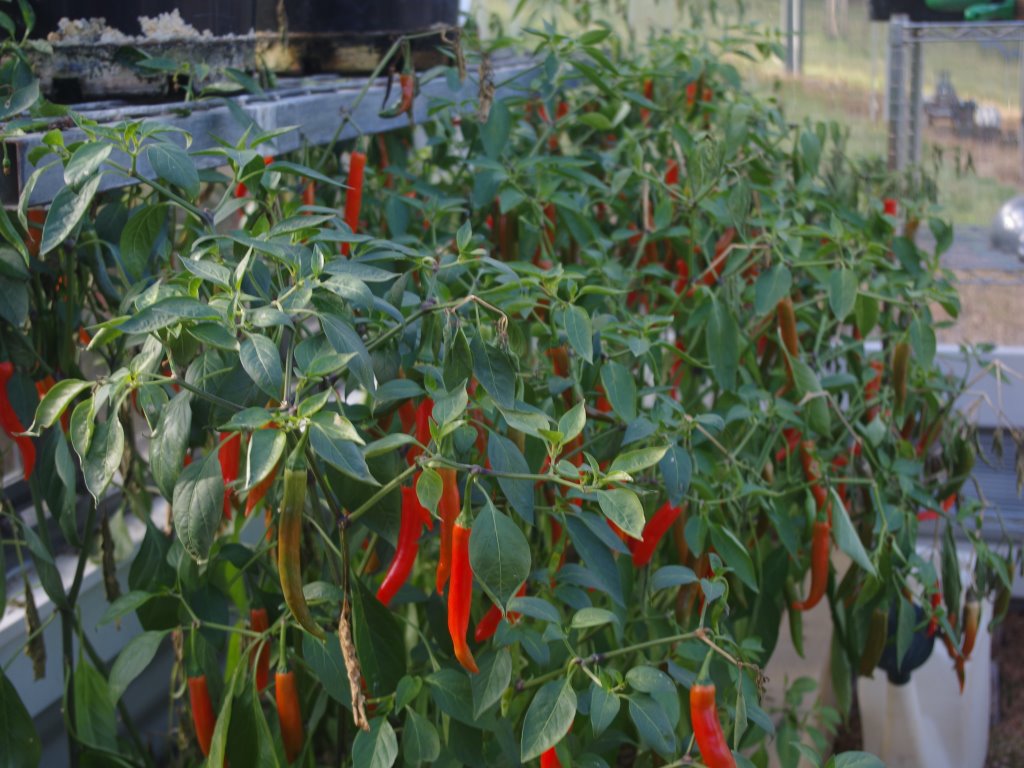
The little tea camellia was moved into the greenhouse about a year ago. The plant took a while to get established, but seems to be doing OK now. In this cool climate, the plant is probably a long way outside its usual range.

The kale planted out a month or so ago in the greenhouse appear to also be appreciating the protection from the elements.
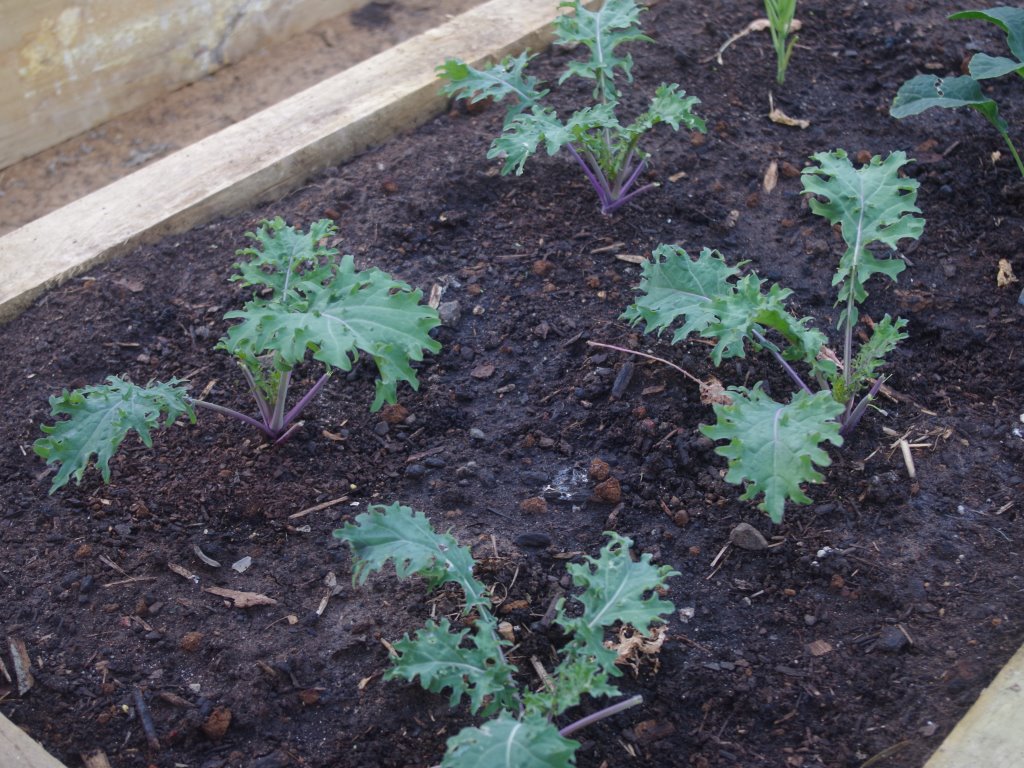
The early signs of an impending spring are appearing about the farm. Daffodils are popping up everywhere and putting on size.

Sandra maintains an interesting collection of succulent plants. They seem to enjoy the conditions here, but one interesting little grafted succulent has been relegated to the safety of the greenhouse. It looks like an alien.

Onto the flowers:



The temperature outside now at about 9am is 8’C (46’F). So far this year there has been 524.6mm (20.7 inches) which is up from last weeks total of 496.8mm (19.6 inches)
